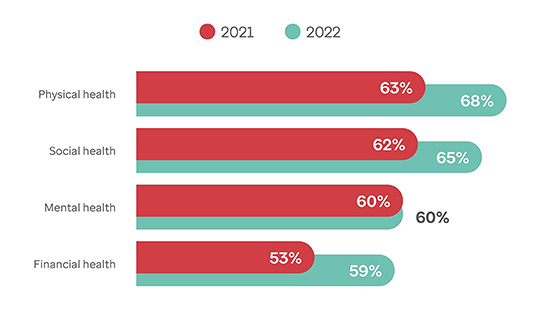
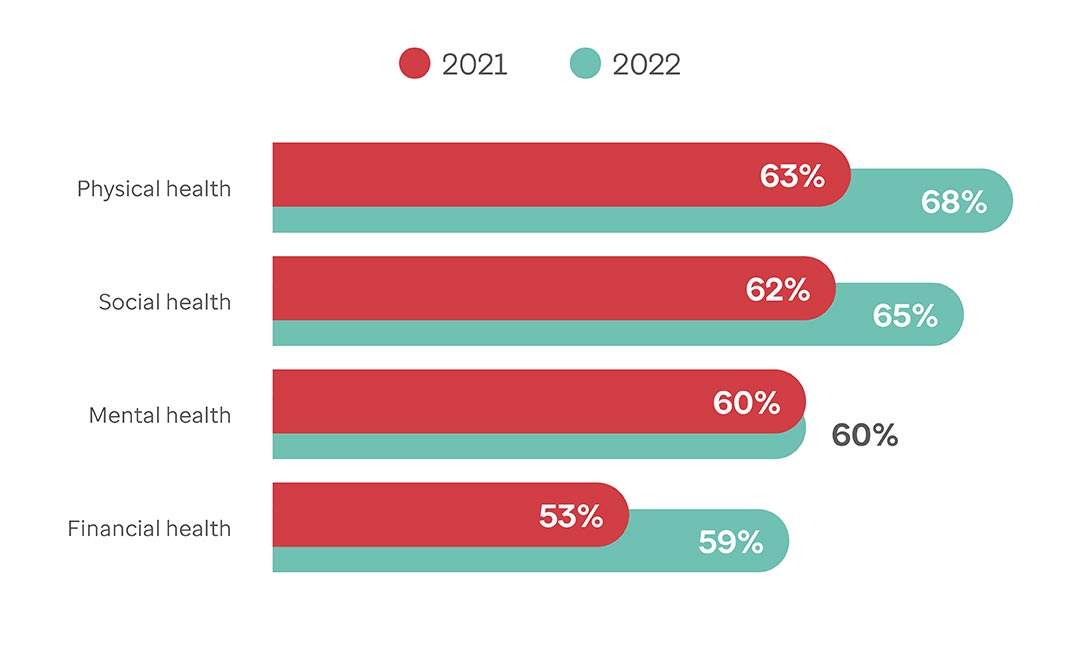
In 2021 and 2022, employers told us whether they address 4 key areas of H&W programmes: physical health went up 5%, from 63% in 2021 to 68% in 2022; social health went up 3%, from 62% in 2021 to 65% in 2022; mental health stayed the same, 60% in 2021 and 2022; and financial health went up 6%, from 53% in 2021 to 59% in 2022.
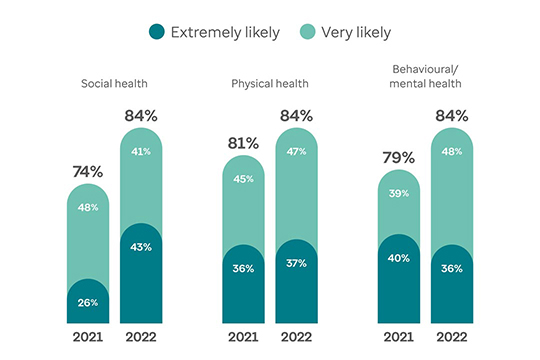
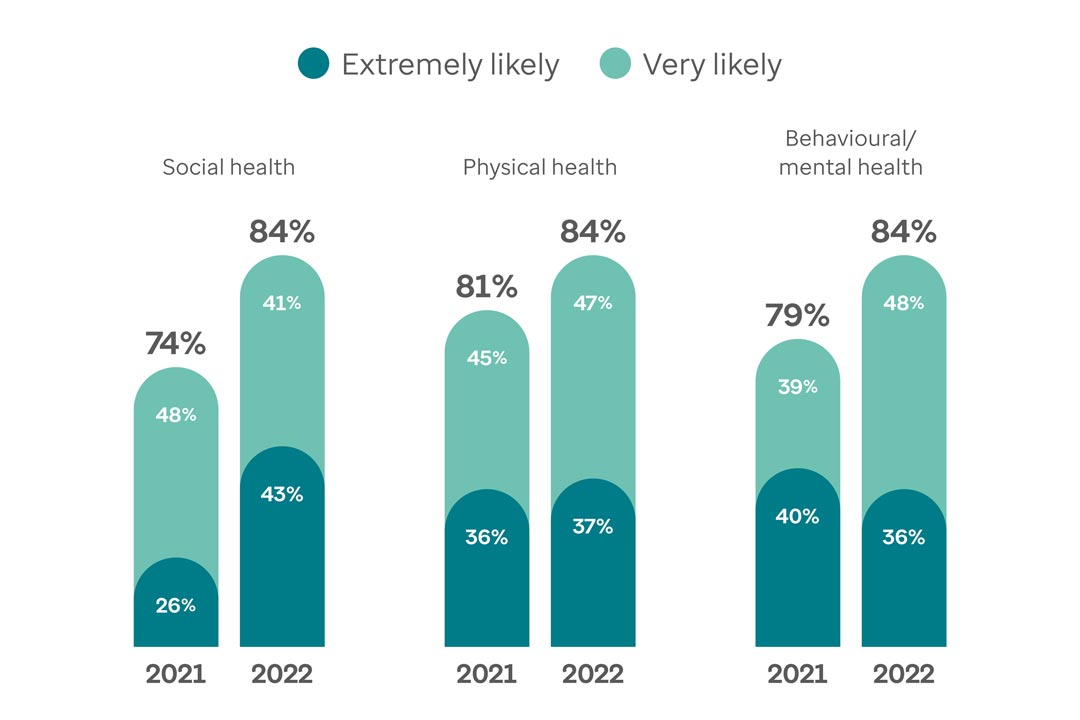
In 2021, 26% of companies said they were “extremely likely” to address social health while 48% said “very likely,” for a total of 74%. In 2022, 43% said they were “extremely likely” to address social health while 41% said “very likely,” for a total of 84%. For physical health, 36% of companies said they were “extremely likely” to address it while 45% said “very likely,” for a total of 81%. In 2022, 37% said they were “extremely likely” to address physical health while 47% said “very likely,” for a total of 84%. For behavioural/mental health, 40% of employers said they were “extremely likely” to address it, while 39% said “very likely,” for a total of 79%. In 2022, 36% said they were “extremely likely” to address behavioural/mental health, while 48% said “very likely,” for a total of 84%.
The likelihood that employee financial health will be addressed by their H&W strategy is ranked higher by companies in the LATAM region compared to EMEA and APAC.
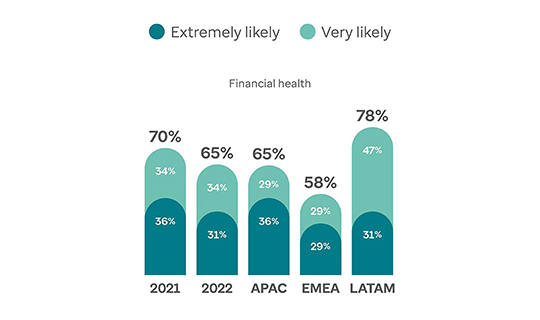
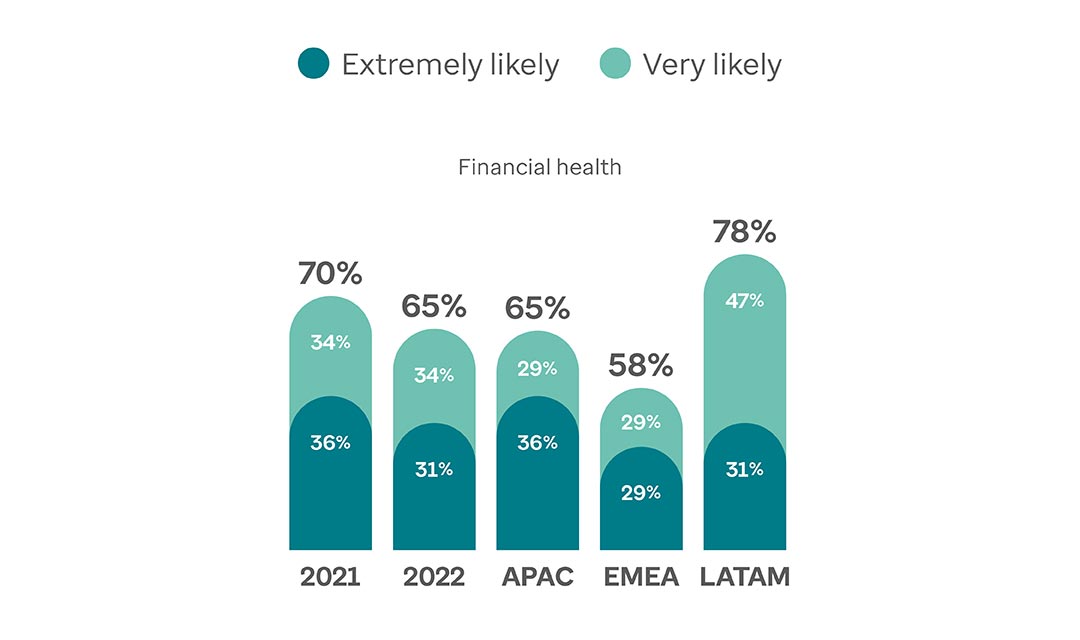
On 2021, 36% of employers said they were “extremely likely” to address financial health, while 34% said “very likely,” for a total of 70%. In 2022, 31% said they were “extremely likely” to address it, while 34% said “very likely,” for a total of 65%. In 2022, 36% of APAC employers were “extremely likely” to address financial health in the future while 29% said “very likely,” for a total of 65%. In EMEA, 29% of employers said they were “extremely likely” to address it, while 29% also said “very likely,” for a total of 58%. In LATAM, 31% said “extremely likely,” while 47% said they were “very likely” to address it, for a total of 78%.
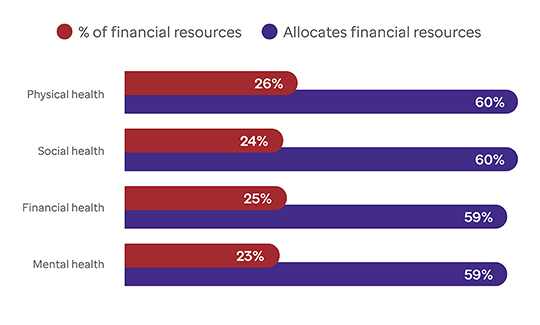
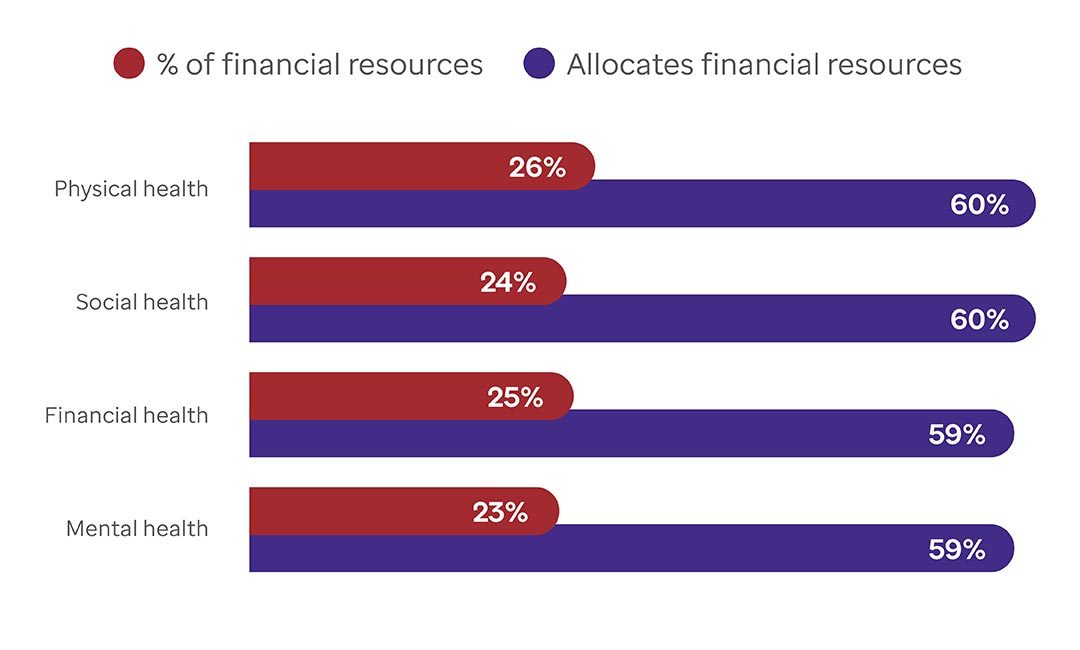
In 2022, 60% of global employers said they invest in employee physical health and spend 26% of their overall H&W budget in that area. For social health, 60% of employers said they invest in that area, 24% of their overall H&W spending. For financial health, 59% said they invest in that area, 25% of their H&W spending. For mental health, 59% said they allocated resources to that area, 23% of their H&W spending.
Employers in the LATAM region are less likely to spend their H&W budget on employee financial health.
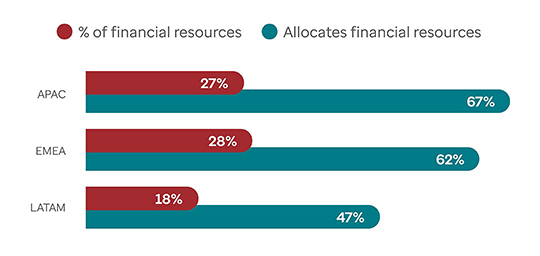
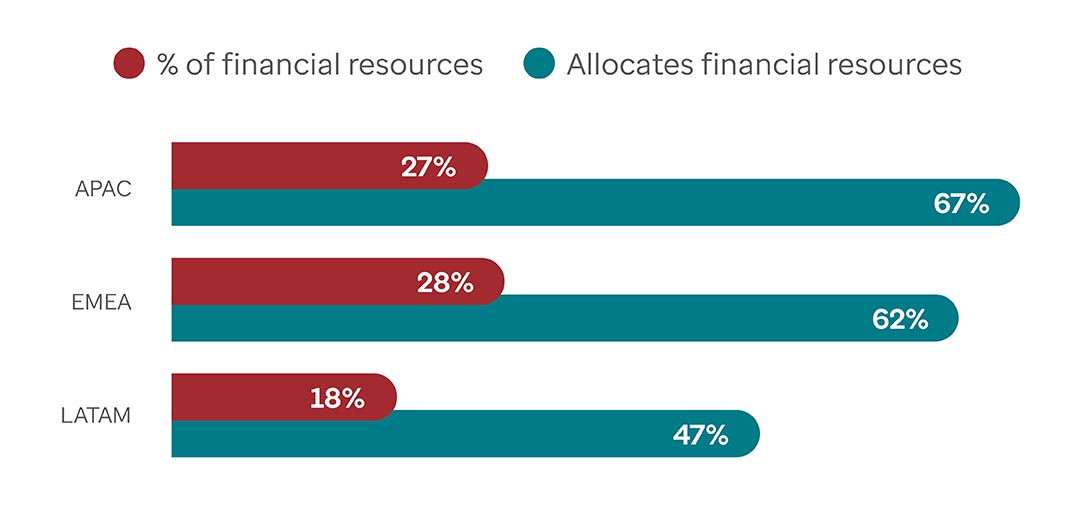
In APAC, 67% of employers said they invest in financial health, 27% of their H&W budget. In EMEA, 62% said they invest in financial health, 28% of their H&W budget. In LATAM, 47% said they invested in financial health, 18% of their overall H&W spending.
The biggest challenge is maintaining financial health these days and for all of us in general.
— Employer in Brazil


In 2020, 22% of global employers said “planning/budgeting” was the area employees needed the most help while 20% said that in 2021 and 28% in 2022. In 2020, 28% said “saving for retirement” was the area employees needed the most help while 24% said that in 2021 and 20% in 2022.
Where does financial health fall within your H&W strategic priorities?
Optum can help. We’re on a mission to create a healthier world. At Optum, we understand that corporate success starts with a healthy workforce. Our integrated health solutions, including our global Employee Assistance Programme, help advance your health and wellbeing strategy to build a culture of health within your organisation.
Learn more at optum.com/globalemployers.
2022 International Wellness in the Workplace Study
Optum surveyed large employers around the world to better understand current health and wellbeing strategies and practices.
Health and wellbeing now a top priority, say employers
Employee health and wellbeing is a top priority — and it’s increasing in importance over time.
Health and wellbeing challenges in the APAC region
Current challenges include effective H&W programme promotion and motivating employees to participate.
Survey methodology
- 347 international employers located in APAC, EMEA or LATAM regions
- Global companies with 3,000+ employees
- Decision-makers in human resources, executive, management or administrative roles
- Surveys administered online from 7 April to 5 May 2022








